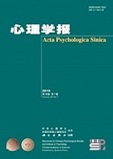|
|
Cognitive Bias Toward Female Facial Attractiveness in Males: Evidences from An ERP Study
ZHANG Yan,KONG Fan-Chang,CHEN Hong,XIANG Yan-Hui,GAO Xiao,CHEN Min-Yan
2010, 42 (11):
1060-1072.
Facial attractiveness is of high importance for human interaction and communication (Joshua, Henderson, Jeremy, & Anglin, 2003). Neuroimaging studies found several brain areas to be differentially responsive to attractive as opposed to unattractive female faces (Aharon et al., 2001; Cloutier, Heatherton, Whalen, & Kelley, 2008; Iaria, Fox, Waite, Aharon, & Barton, 2008; Ishai, 2007; Kranz & Ishai, 2006; Penton-voak, Jacobson, & Tribers, 2004; Senior, 2003). The brain areas responsive to facial attractiveness of potential mates include the superior temporal sulcus (O’ Doherty et al., 2003), basal ganglia (Aharon et al., 2001) and medial orbitofrontal cortex (Kranz et al., 2006). However, little is known about the time course of brain responses related to this process. The present study aimed to compare event-related potentials (ERPs) in response to attractive and unattractive female faces in order to determine which time periods were sensitive during judgment and recognition of female facial attractiveness for males.
ERPs were used to explore temporal changes of judgment and recognition toward attractive female faces based on a study-recognition experiment paradigm. Data from 13 heterosexual males participants (mean age 22.35 years) were included in the analysis. There are 490 unfamiliar Chinese female pictures from Google. First, 80 college students rated the female pictures as attractive, unattractive and average. In the judgment task, after practice with 10 face pictures participants evaluated 84 attractive faces pictures and 84 unattractive faces pictures presented on computer. In the recognition task, they were asked to identify previously viewed faces from the initial judgment task among attractive, unattractive, and average face pictures.
The results showed that attractive and unattractive faces elicited significant differences in early and late ERP components in judgment and recognition tasks. The most enhanced activity was produced in the prefrontal-central cortex. Attractive faces elicited more enhanced ERP effects than unattractive faces on N300 component and P350~550ms during the judgment task. N300 and P350~550ms are thought to reflect different cognitive functions, including perceptual closure, stimulus evaluation, decision-making and working memory during judgment tasks (Polich, 2003). As well, attractive faces elicited more enhanced ERP effects than unattractive female faces on the P160 component, N300~500ms, and P500~700ms time windows during the recognition task. Early ERP effects such as P160 in recognition tasks may reflect not only perception-related processing of attractive facial stimulus features but also the detection of perceptual features or facial configurations, which is associated with stimulus-driven frontal attention mechanisms (Chen et al., 2007). On the other hand, attractive female faces may have higher intrinsic reward values for males (Senior, 2003). It is suggested that facial attractiveness processing may start prior to the LPC time window (Werheid, Schacht, & Sommer, 2007), thus in time periods that are related to stimulus-driven rather than evaluative processes. Behavior research evidence has shown that people have longer reaction times and higher accuracy rates in identifying attractive faces. Therefore, the results of this study indicated that there were female facial attractiveness bias in processing of judgment and recognition for males. It may be that attractive female faces represent reproductive fitness and mating value for males from the evolutional perspective.
Related Articles |
Metrics
|




